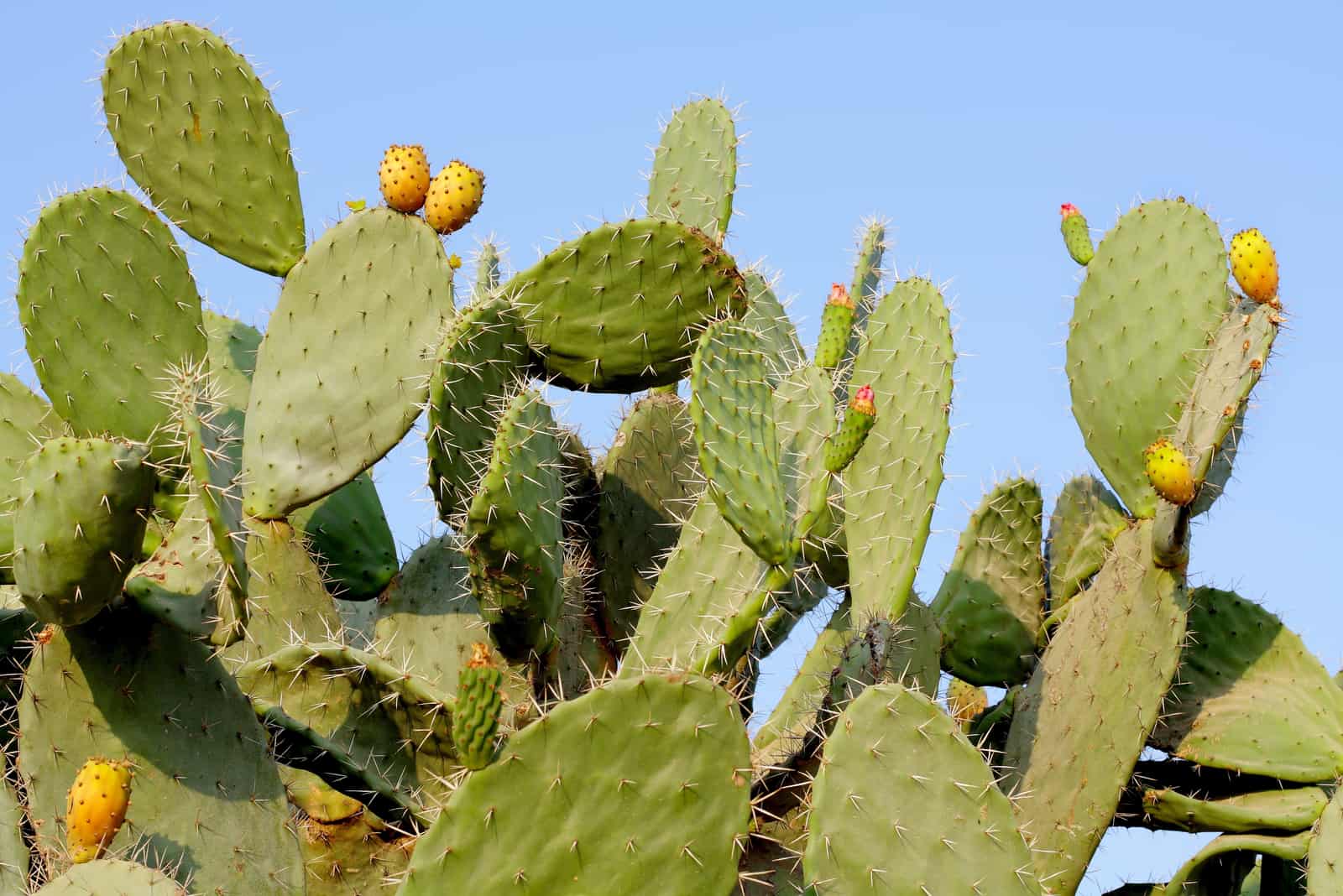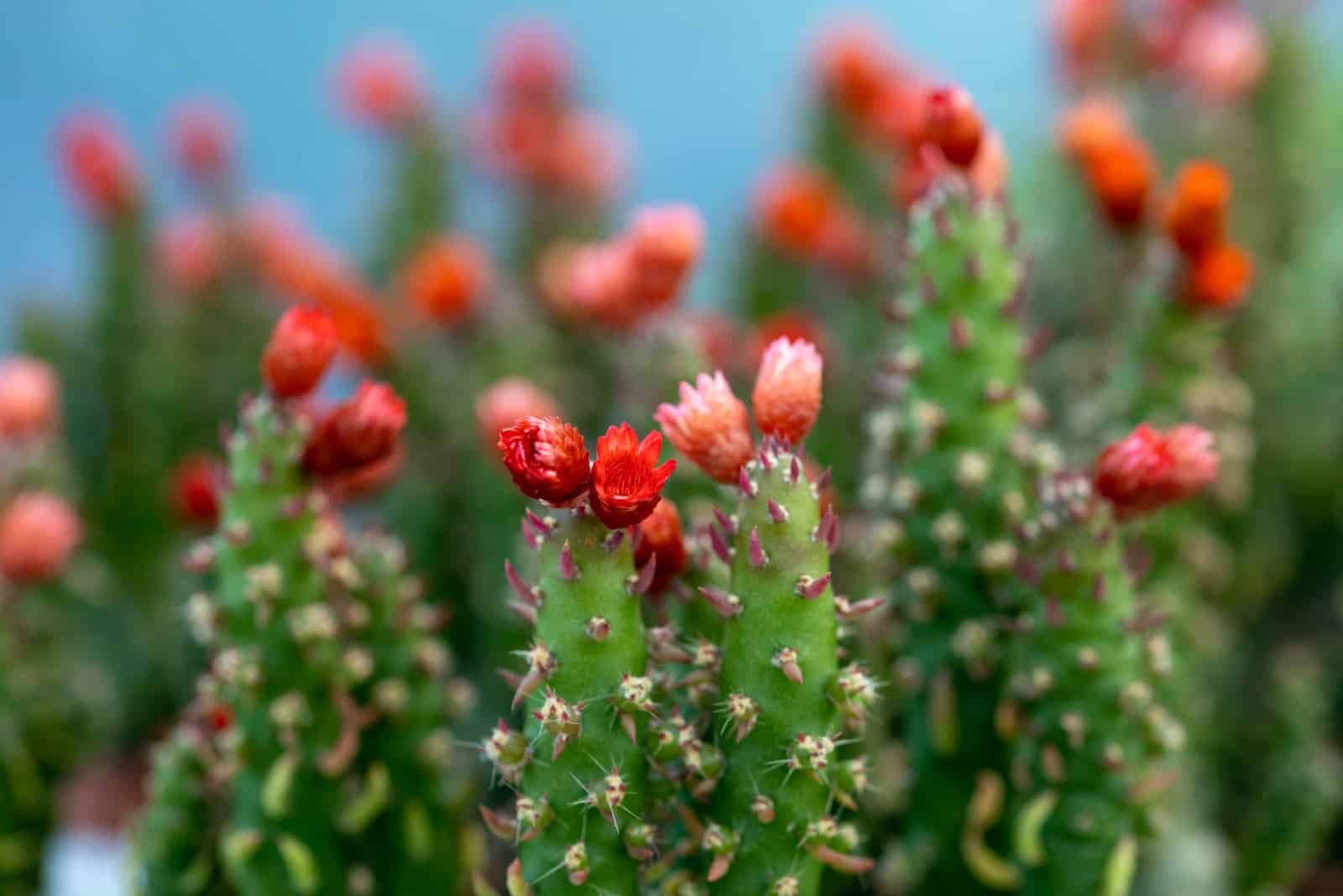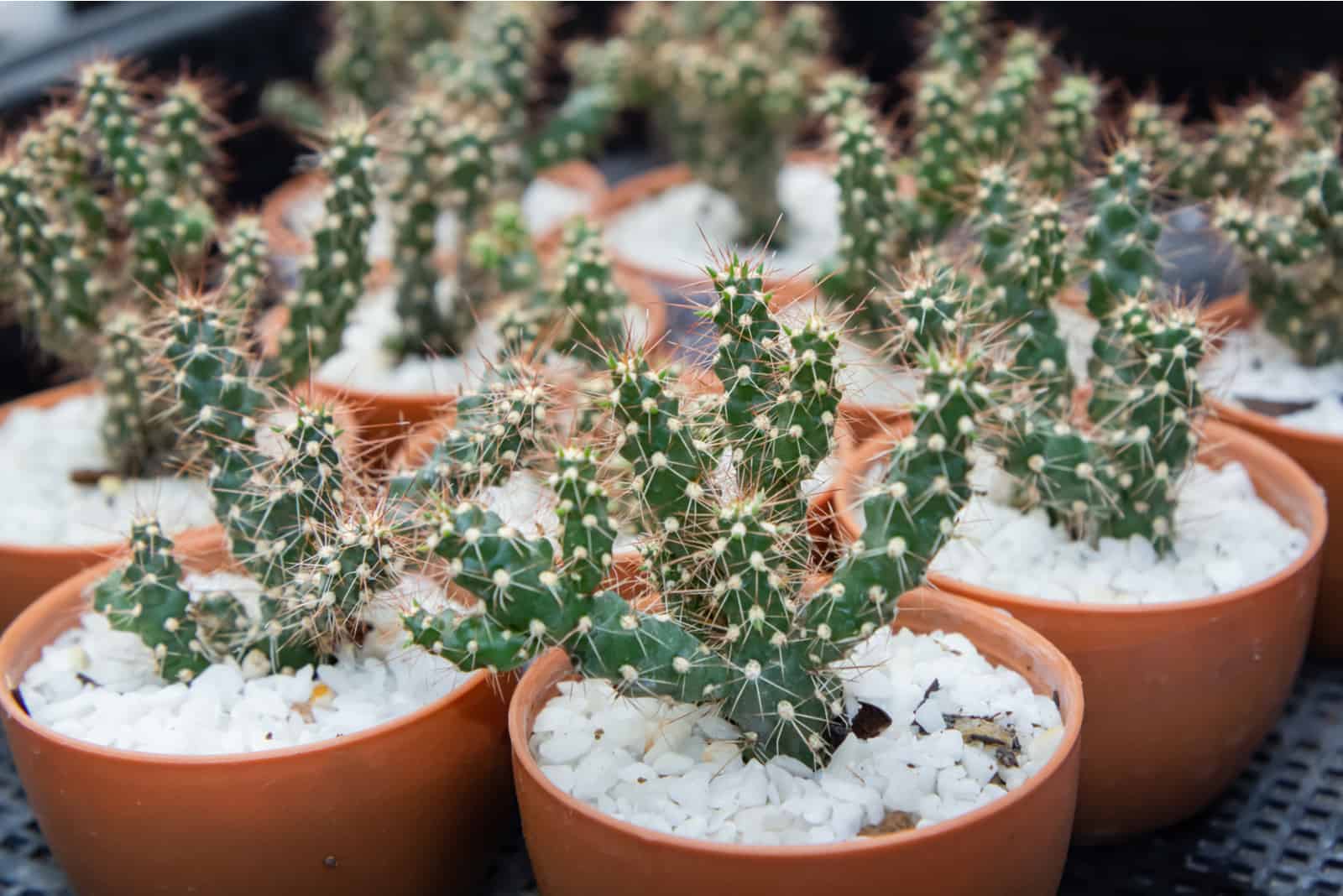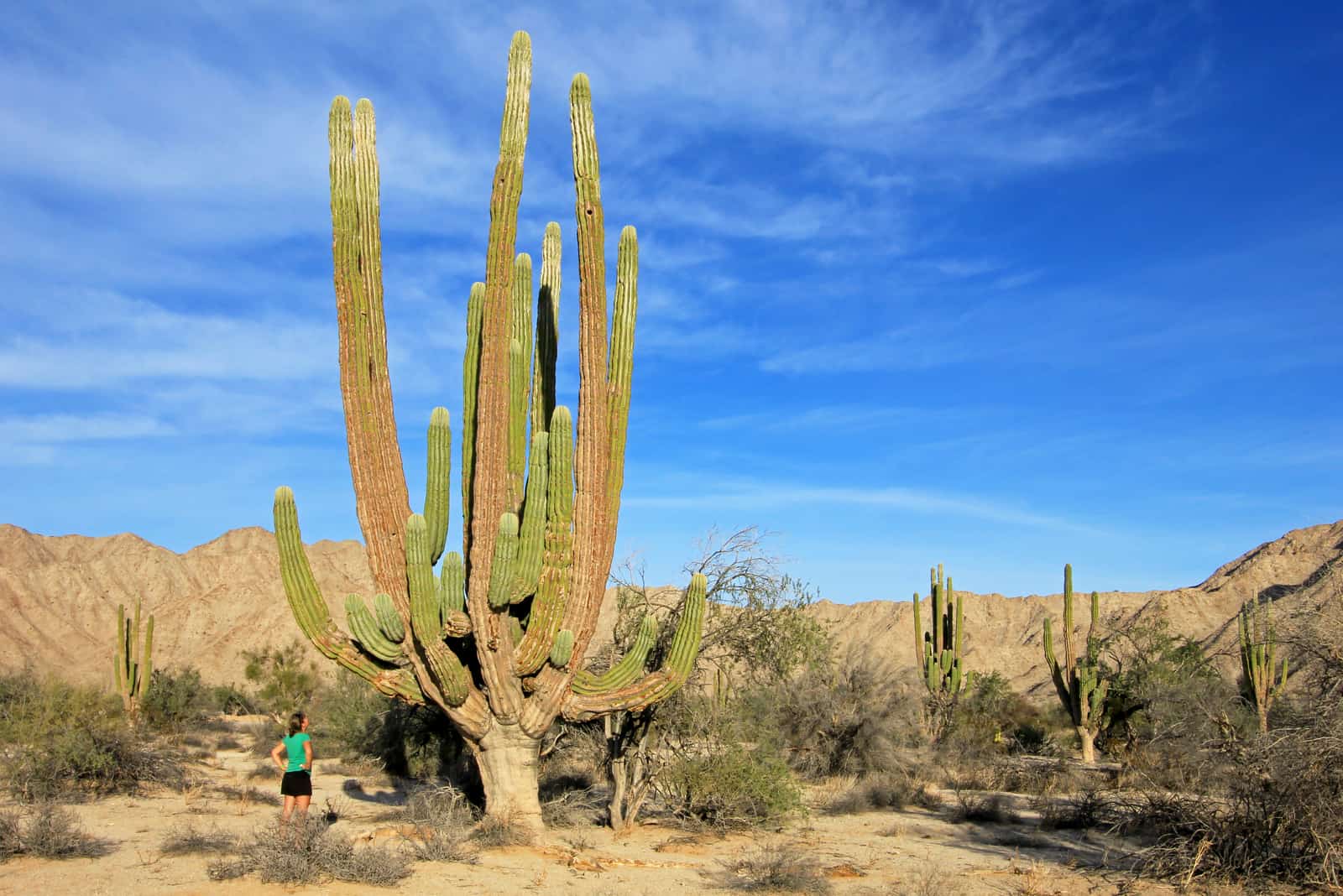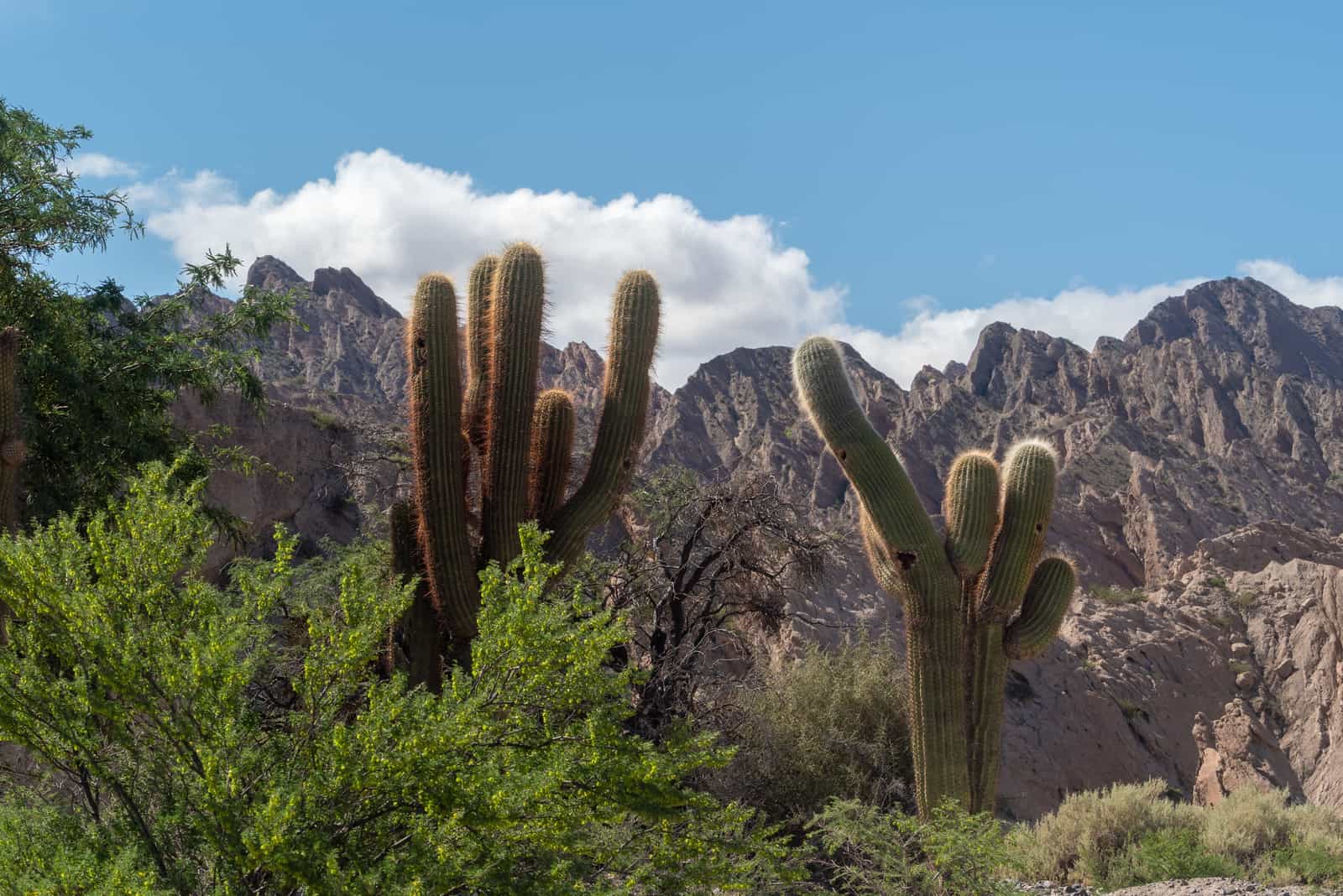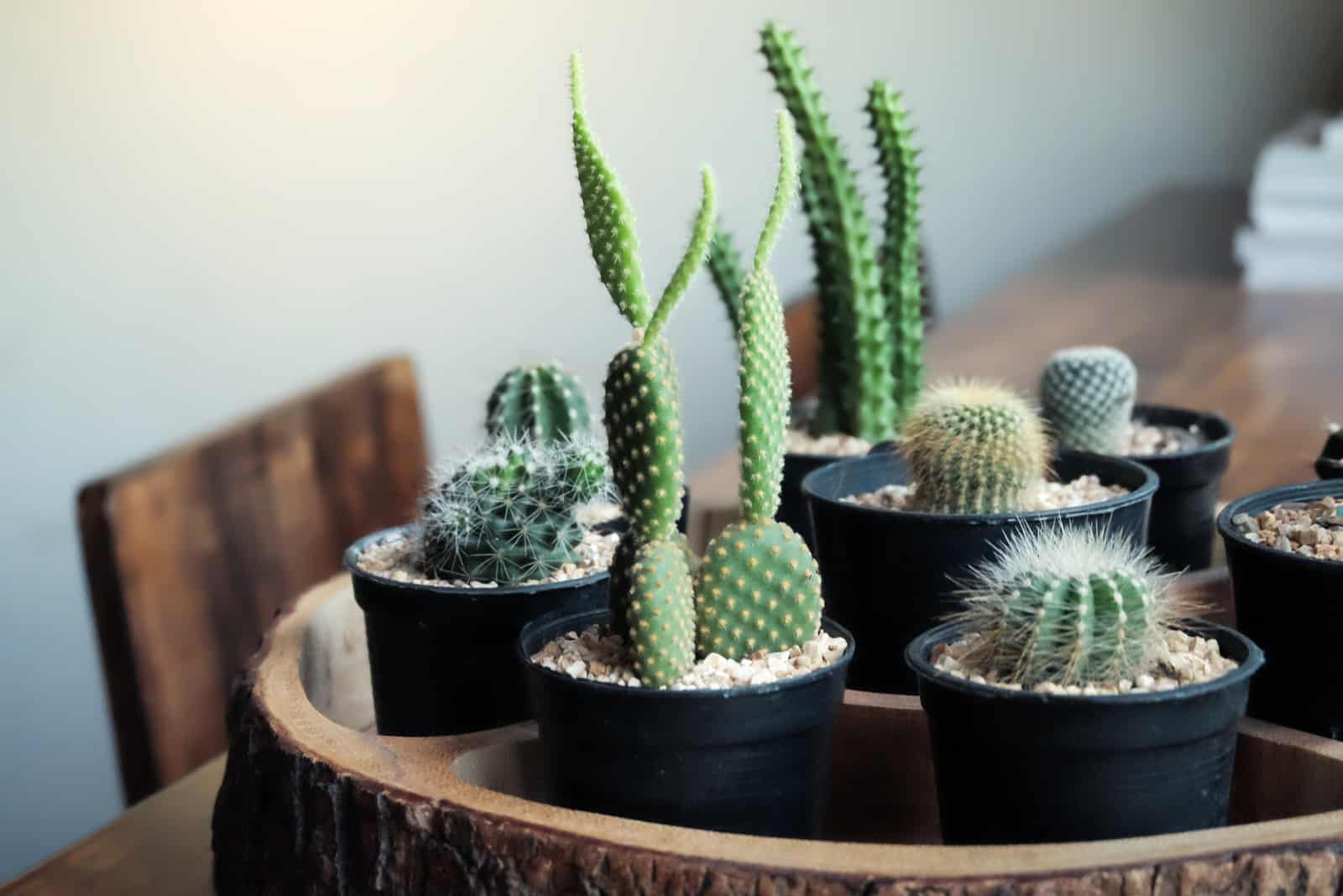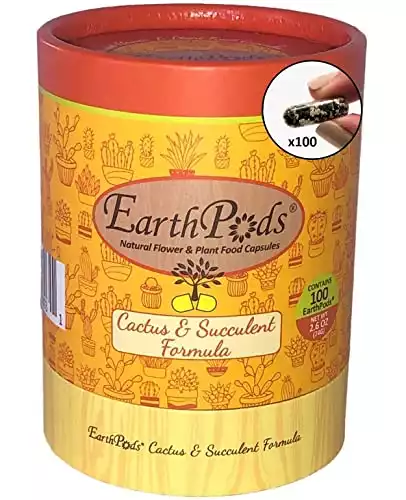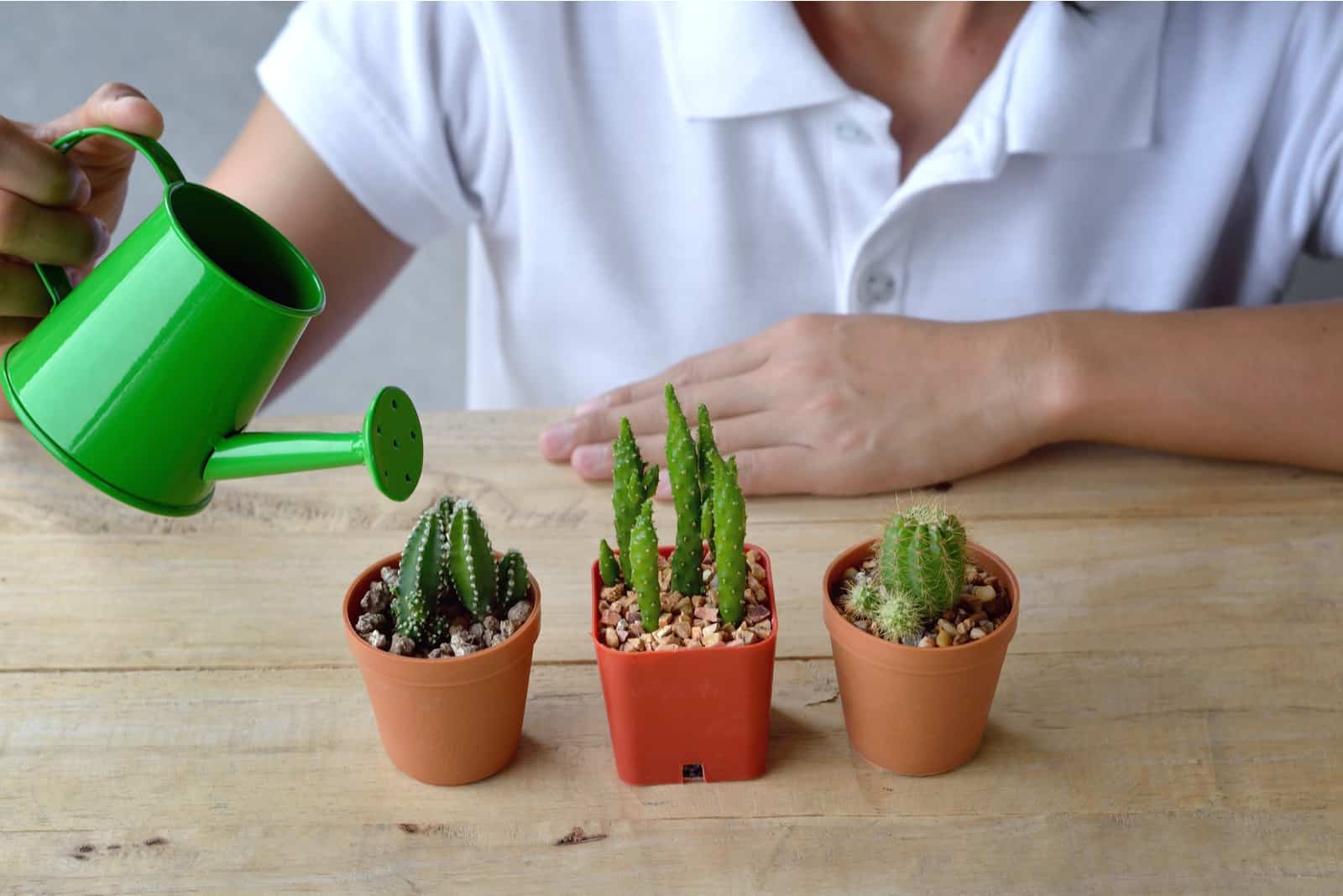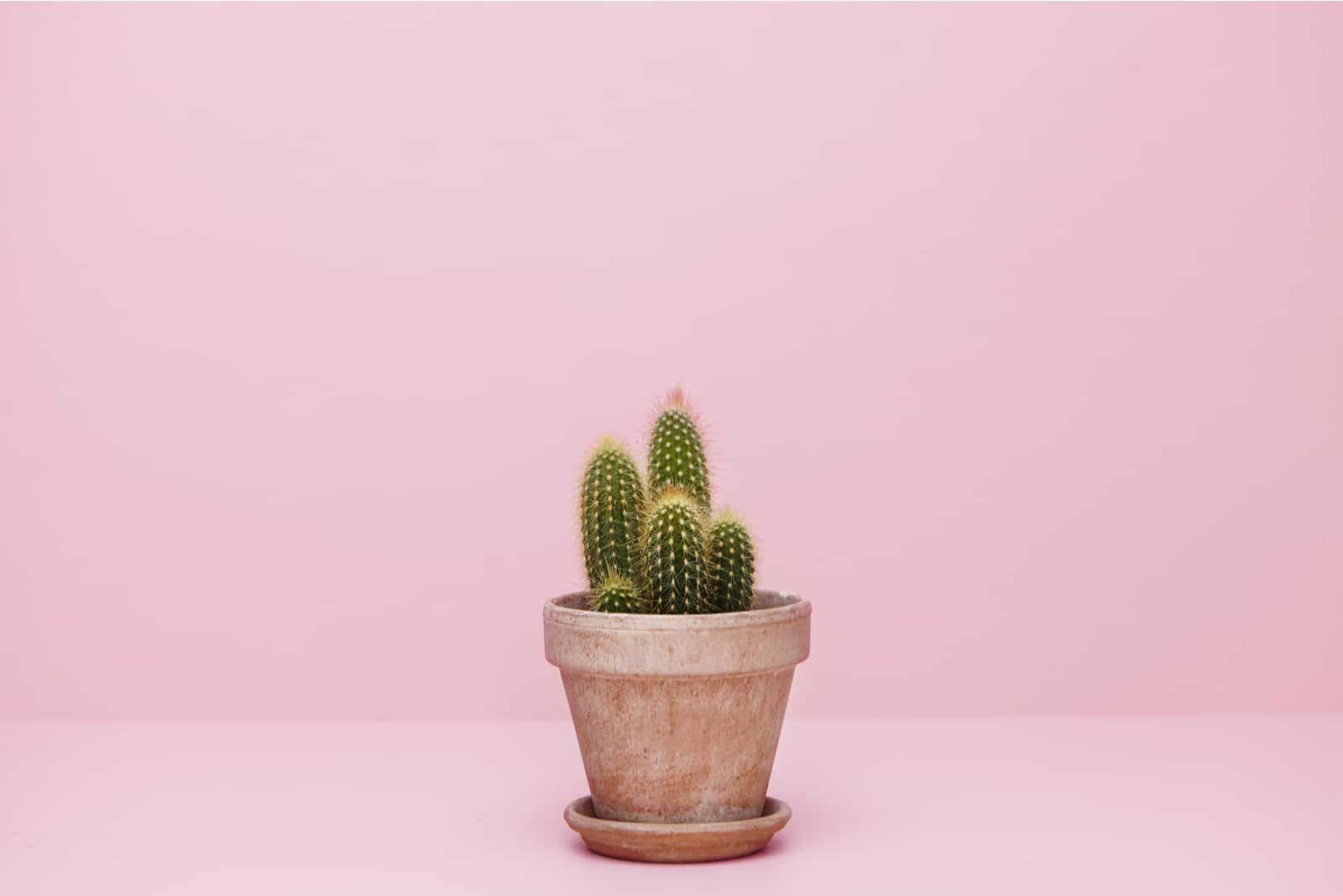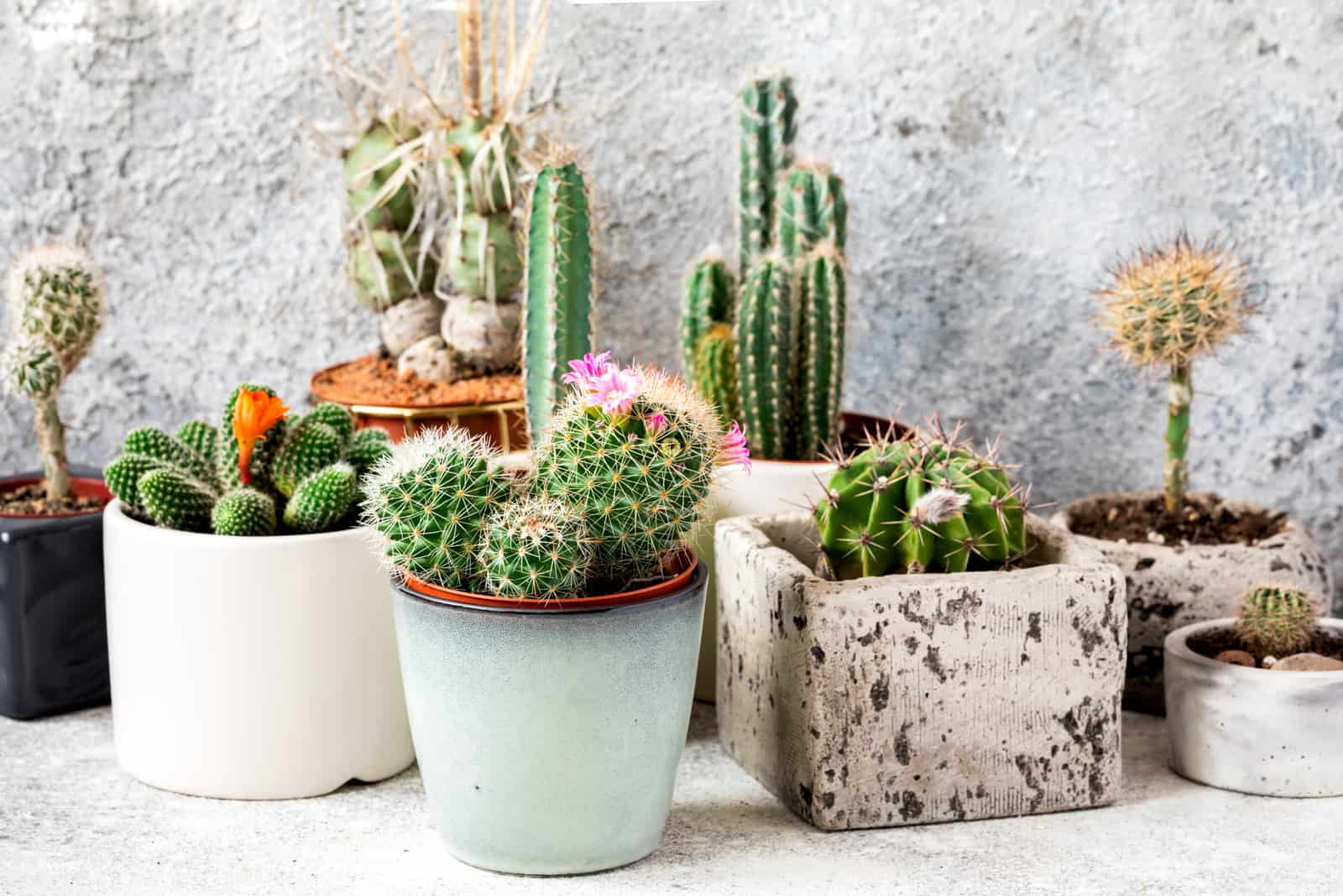Positive Bloom is an Amazon Associate and we earn from qualifying purchases through these links at no extra cost to you.
When I think of a cactus, or succulents in general, the first words that come to my mind are low-maintenance and diversity.
I’m sure you already know that the cactus is a slow-growing plant; it grows slower than other succulents. When I got my first cactus, I looked at it and wondered why it didn’t grow. It was only then that I found out that there’s no need to panic; patience is the key.
Fortunately, some species do grow faster and are even suitable for beginners. So, I decided to make a list of the fastest growing cactus species.
Let’s start!
Fastest Growing Cactus Species
The cactus belongs to the Cactaceae family, which has nearly 2,000 species. It’s no wonder we can find species with a range of growth rates.
If you are a cactus enthusiast or just an impatient cactus-loving beginner, here’s a list of the fastest growing cactus species.
Austrocylindropuntia Subulata
Austrocylindropuntia subulata, or Eve’s needle cactus, is native to the Peruvian Andes. It is one of the fastest-growing cactus species.
Its stems can grow up to 3 feet in length in a single year. It doesn’t get very tall and seldom exceeds 9 feet, but it grows in width frighteningly fast. This means that if you want it to grow healthily and not affect the other cacti around, it must be planted far apart from them.
This cactus is a robust shrub with elongated branches, glossy green stems, and curved and fleshy leaves.
Pink flowers and egg-shaped green fruits add more beauty to this fascinating plant.
Pereskia Aculeata
The pereskia aculeata is a woody shrub in its early stages. When it matures, it turns into a climbing vine. It’s native to West India, South America, and Panama.
This fast-growing plant grows up to 3 feet per year and can reach about 30 feet when provided with the right conditions.
The pereskia aculeata is another invasive species of cactus that produces edible fruits. It’s commonly known as a Barbados gooseberry.
Epiphyllum
The epiphyllum is a succulent vining plant native to Mexico and Central America, and it grows approximately 1 foot per year. However, if it’s provided with the right conditions, it can grow up to 3 feet per year.
The epiphyllum, or Dutchman’s-pipe cactus, has waxy, oval-shaped leaves and white, yellow, or pink flowers. This cactus also produces fruits that can be yellow, orange, or reddish.
Due to its fast growth rate and vining habit, this cactus is considered invasive in some parts of the world.
Opuntia (Prickly Pear Cactus)
The prickly pear cactus is one of the most common cacti native to Central Mexico. This cactus species is of great importance in commercial food production; they have improved the livelihood but affected the environment and become invasive in some parts of the world.
The Prickly pear cactus can grow up to 30 inches per year.
The most common variety for eating is the Opuntia ficus-indica. Harvesting a prickly pear cactus takes time because of the spines and glochids on the pads and fruit.
Cutting the pads from the plant at any time and carefully removing the spines and hairs is how the pads are harvested. They can be consumed raw or cooked in several ways.
Cylindropuntia
The genus Cylindropuntia consists of about 20 cacti and is native to Mexico. They’re primarily shrubby or groundcover cacti, although they can also grow into trees.
This cactus can grow up to 15 inches per year.
The Cylindropuntia genus was previously classified as a subgenus of Opuntia, but this has subsequently been changed. Nonetheless, some Opuntia types, sometimes known as cholla cacti, can be found.
Cholla cacti are among the most prevalent cacti found in deserts in the southern United States and Mexico.
There’s one interesting fact about a cholla cacti; you’ll find it under the name jumping cholla as it can jump at you. Actually, the stems attach to you as you touch them, but it definitely resembles jumping.
Even though this is a funny and exciting feature, you should be careful when approaching it.
One more famous cactus from this genus is the Cylindropuntia spinosior, native to Arizona and Mexico. Growers formed a hybrid of jumping cholla and Cylindropuntia spinosior and named it Cylindropuntia x kelvinensis.
Trichocereus
If you decide to plant a Trichocereus (more commonly known as the San Pedro cactus) outdoors, you can expect it to grow from 10 to 20 feet tall. This cactus is native to the Sonoran desert.
It’s a very common plant among growers as it’s hardier than most other cereus plants. It doesn’t need much direct sunlight or water compared to an Epiphyllum.
The Trichocereus is a fast-growing cactus and can grow up to 11 inches per year.
The San Pedro cactus is hallucinogenic due to the presence of mescaline, and it’s used in rituals instead of peyote. Find out more about the San Pedro cactus and mescaline here.
Hylocereus Undatus
The hylocereus undatus, or dragon fruit cactus, is native to Mexico, and Central and South America.
A dragon fruit cactus can grow up to 15 inches per year.
Aside from its huge flowers, which bloom from July to October, this plant produces tasty pink fruits.
Dragon fruit cacti grow up to 20 feet tall and develop aerial roots to cling to surfaces. This is why these cacti have a climbing habit and can be grown as fruit vines . If you decide to grow this cactus as a houseplant, it’s best to plant it in the spring.
You can expect the dragon fruit cactus to produce fruits from seeds in seven years. However, dragon fruit cactus cuttings will be ready for harvest in two years.
Cereus Peruvianus
Also known as the Peruvian apple cactus, the Cereus peruvianus is native to South America.
This columnar cactus can grow up to 15 inches per year when grown in soil. On the other hand, if you decide to grow this plant in a pot, it will grow up to 4 inches per year.
This thorny cactus grows vertically in a single column and has a long lifespan.
The column cactus can grow up to 30 feet. Columns are bluish gray-green, with three to five blades that grow upright in a single column.
The Cereus peruvianus produces edible fruits, and if you get the chance to visit South America, you’ll find the fruits under the name pitaya.
Be patient with the fruits; leave them to ripen fully to taste one of the best fruits ever!
Pachycereus Pringlei
The Pachycereus pringlei, or Mexican giant cardon cactus is the world’s tallest cactus and can grow up to 63 feet.
This cactus can grow up to 11 inches per year; this may not seem a lot, but this is actually quite fast for a cactus.
Due to its unusual appearance and ease of maintenance, this cactus is also popular as an indoor plant. However, its size is usually much smaller.
A mature Pachycereus pringlei produces flowers that can be about 3 inches long.
Cleistocactus Strausii
The cleistocactus strausii or silver torch is native to Bolivia and Argentina.
This cactus can grow up to 3 inches per year.
I’m not sure where to begin when describing this eye-catching plant. It has silver to blue spines and slender columns that can grow up to 10 feet.
When the column is about 18 inches tall, you’ll notice burgundy flowers.
This cactus grows well in raised beds, pots, and narrow spaces.
I suggest that you plant it next to other exotic cacti to enjoy the view.
Thanksgiving, Easter, And Christmas Cactus
Three holiday cacti are often confused with one another. All of them grow up to 3 inches per year.
The schlumbergera truncata, Thanksgiving cactus, or False Christmas cactus blooms and produces amazing orange, red, pink, or white flowers on Thanksgiving.
The Thanksgiving cactus can grow up to 24 inches long and 24 inches wide.
The rhipsalideae gaertneri, or Easter cactus, doesn’t really resemble cacti even though it belongs to the Cactaceae family. This cactus is native to the Brazilian rainforests.
The Easter cactus blooms in winter and spring, when it produces striking orange, pink, red, white, or purple flowers. It’s a low-maintenance plant and one of the favorites of plant growers and it is suitable for beginners.
The Easter cactus can grow up to 2 feet wide and 2 feet tall.
A schlumbergera x buckleyi or Christmas cactus blooms in winter and produces flowers that come in various colors, like pink, red, magenta, white, or purple.
Sometimes they can even be cream, salmon, peach, or orange.
The Christmas cactus is bred from a schlumbergera truncata and schlumbergera russelliana.
Mammillaria
The Mammillaria genus includes around 200 species and varieties, and it is the largest genera in the Cactaceae family.
Plants from the Mammillaria genus grow from only 2 inches to 24 inches (rarely). As they are small, it’s surprising that they’re fast-growing; they grow approximately half an inch per year. Considering their mature size, this growth rate is quite fast.
All plants from this genus bloom, and the blooming lasts for only a week.
However, the flowers are stunning and come in a variety of colors. The great thing is that you choose the color and can choose between lots of cacti from this genus, and I guess that’s the best thing about the largest genera in this family.
Echinopsis Terscheckii (Cardon Grande Cactus)
The Argentine saguaro cactus, or cardon grande cactus, is a fast-growing, beautiful, columnar cactus that can reach 25 feet or more, making it one of the largest Echinopsis species.
It can grow up to 3 inches per year and can reach 3 feet when grown as an indoor cactus. This is an uncommon size, and it’s usually smaller, but if it’s provided with the right conditions, you can expect it to grow larger.
Mature plants will produce 10 inch wide side arms (branches) with 8-14 deep ribs and yellow spines. In April, it produces spectacular, white night flowers, which are 8 inches long and have scarlet to green outer segments.
If you decide to grow an exotic garden, I strongly recommend this plant.
Rhipsalis
The Rhipsalis genus of cactus is part of the broader Rhipsalideae family, which comprises three other genera.
These cacti grow up to 3 inches per year.
They differ from most cacti because they lack spines, thrive without direct sunlight, and require a lot of water.
They have one interesting feature; the long, thin, interwoven stems of these cascading cacti make them stand out from the other cacti.
In their natural habitat, Rhipsalis cacti grow on rocks or trees. Therefore, when grown indoors, they require a succulent potting mix.
This cactus produces yellow or white flowers.
How To Make A Cactus Grow Faster?
Now that you know about the fastest-growing cacti species, it’s time to learn how to make cacti grow faster in general.
Each plant grows healthier and faster when provided with the right conditions. The same goes for a cactus.
Potting soil, temperature, light, fertilization, humidity, and watering play an essential role in maintaining a healthy cactus. Still, you can also make your cactus grow faster if you accommodate your conditions to the cactus’s needs.
Let’s see more!
Choose The Right Soil
A few things need to be considered when choosing the soil for cactus plants.
First, cacti plants need well-draining soil, perlite, pebbles, or sand materials that improve drainage.
Second, the soil must be porous; if it’s compact, like clay soil, the chances of clogging the air spaces increase, as clay retains water.
Finally, the soil has to have porous and well-draining materials and organic matter. So, adding coco coir and peat moss will make the soil full of the nutrients that the cacti plants need.
I suggest purchasing a ready mix designed explicitly for cactus plants if you are a beginner.
Adjust Temperature
Cacti thrive in temperatures between 70 and 80 degrees Fahrenheit.
The plant prefers a cool-down period in the winter, with temperatures hovering around 55 degrees Fahrenheit.
A Desert cactus is used to cold nights in its natural habitat. Some varieties can even endure temperatures as low as 35 degrees Fahrenheit. However, any indoor plant that hasn’t been hardened off should be protected against winter drafts.
Adjust Light
Cacti are desert plants, so it isn’t surprising that cacti need 4-6 hours of direct sunlight every day.
Some forest and desert cacti species shouldn’t be exposed to full sun as it might kill them. If your cactus turns white, you’ll have to adjust the light level.
I suggest you place your cactus near a sunny window. The best option is if you move the plant next to a south- or east-facing window; it’ll get filtered light during the summer and full sun during the winter.
If you live where there isn’t much natural sunlight, consider investing in grow lights and a light meter. This is the best way to ensure enough light, keep your indoor cactus healthy, and help it thrive.
Fertilize
Cacti aren’t heavy feeders and thrive even in the harshest environments. However, a little fertilizer won’t harm them.
Never use the all-purpose fertilizer you usually apply to your houseplants. Instead, choose high-quality fertilizer designed for cacti. Regular fertilizer has an npk ratio that won’t fulfill cacti’s needs; cacti require fertilizers rich in phosphorus.
I recommend:
You should fertilize this plant during the growing season (2-3 times). Never fertilize it during winter.
Carefully read the instructions, and don’t apply more fertilizer than is suggested on the package.
Adjust Watering
Yes, a cactus is a forgiving plant but don’t let it stay without water for too long. Although it may seem impossible, you can underwater the cacti plant.
A shriveling cactus is a thirsty cactus!
However, more dangerous than underwatering is the notorious overwatering. Remember that slow growth can be caused by overwatering, so avoid it at any cost.
Overwatering will clog the air spaces in the cacti’s soil, reduce oxygen, and cause their roots to rot.
Root rot is the biggest enemy of all succulents and will kill them way faster than other common houseplants.
The cactus plant grows actively during spring and summer and requires watering every ten days. Water your cactus thoroughly, as a little water will evaporate fast, and the roots won’t be able to uptake the nutrients from the cactus soil.
Also, let the soil dry out well after watering, to reduce the risk of waterlogging. If the excess water remains within the pot, the next time you water your cactus (according to the suggested watering schedule), the waterlogged soil will attract pathogens that cause the roots to rot.
Cacti go dormant during the winter, which means they aren’t growing actively, so water them once a month. If you grow a desert cactus, water it every six weeks.
Check the moisture before watering; stick your finger in the cactus’s soil. If the soil is dry, proceed with watering; if it isn’t, wait a little bit longer.
Here’s a video showing how to water a cactus:
Pay Attention To The Humidity
Many beginners ask themselves if succulents need humidity to grow. Some succulents prefer high humidity levels (quite shocking, right?), but that’s not the case with cacti.
Moderate humidity levels will keep your cacti healthy and ensure they grow faster.
Why Are Cacti Slow Growers?
It takes patience when growing cacti. Don’t worry if your cactus grows slowly; its health is more important.
The natural habitat of cacti species forces these plants to grow slower as the soil lacks nutrients; if the cacti didn’t adapt to these conditions, they wouldn’t survive.
Cacti don’t have leaves, so they can’t absorb the sun like other plants. Plants need the sun to perform photosynthesis; the inability to absorb more sun rays causes the cacti species to grow slowly.
Leaves contain more chlorophyll, that’s also essential for photosynthesis; one more cause of slow growth.
You’ll get the best insight into the cacti growth rate if you grow them from seeds. The propagation is easy but really takes time.
After you sow the seeds of some plants, you usually wait for a short period for the germination process to end. That’s not the case with cacti; you’ll have to wait for at least a month before anything happens. In this stage, there is nothing you can do to accelerate the process; wait patiently for the stems to sprout. Waiting will pay off!
Fun Facts About Cacti Plants
Cacti plants keep surprising us, so let’s see some fun facts about this genus.
Cacti plants have become very popular among growers due to their low maintenance. That’s why we have an insight into the growth rate of each cacti variety.
The most popular cacti varieties are the fast-growing Easter cactus, ladyfinger cactus (from the Mammillaria gents), golden barrel cactus (Echinocactus grusonii), and saguaro cactus. You may hear a lot about the Euphorbia species in the plant stores if you ask for some popular cacti. Still, these species aren’t cacti but rather succulents.
Some claim that the most expensive variety of cactus is a copiapoa cinerea, native to Chile. You’ll have to pay around $900 if you find the ‘real’ Copiapoa cinerea.
Many think the real one is close to extinction due to exploitation.
The tallest cactus measured is the Saguaro Cactus (carnegiea gigantea) which can grow to over 40 feet.
FAQs
What are the easiest cacti to grow?
Although most cacti are easy to grow, the barrel cactus (Ferocactus) stands out. If you ensure sufficient light and pay attention to its watering, you’ll have a happy and healthy cactus. Wait until the soil dries out before you water this cactus again, and that’s it!
What are the fastest-growing succulents?
The fastest-growing succulents are the variegated-leaved aeonium sunburst, the eye-catching Echeveria species, the aurora pink jelly bean sedum, and the crassula species.
Do cacti grow in water?
Cacti can grow well in water, but if you want them to grow healthily and thrive, you’ll have to ensure some organic and inorganic matter. As cacti plants are susceptible to root rot, you’ll have to be cautious if you decide to root cacti in water. This means that the roots will grow well initially, so it’s best to transplant them into the soil after you notice them sprout.
Wrapping Up
Due to the low maintenance, price, and availability, cacti have become popular houseplants nowadays. However, I think that their appearance is what makes them stand out from other plants.
Cacti are known for their slow growth, so patience plays a huge role in growing a healthy and thriving cactus. Luckily, some cacti grow faster. If you’re impatient, you can now choose from the fastest growing cactus species in our article.
No matter which one you choose, I’m sure you’ll be happy to care for it (they’ll forgive you if you forget them for a while).
Until next time!
Like this post? Share or pin it for later!

